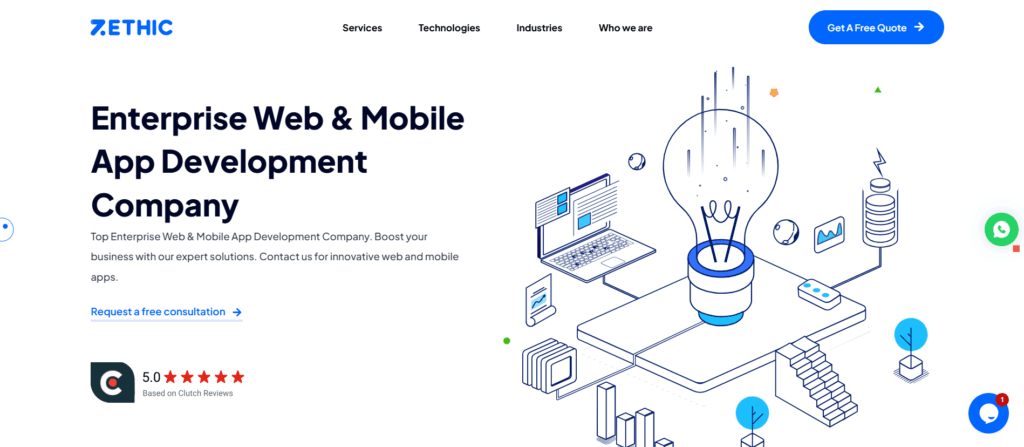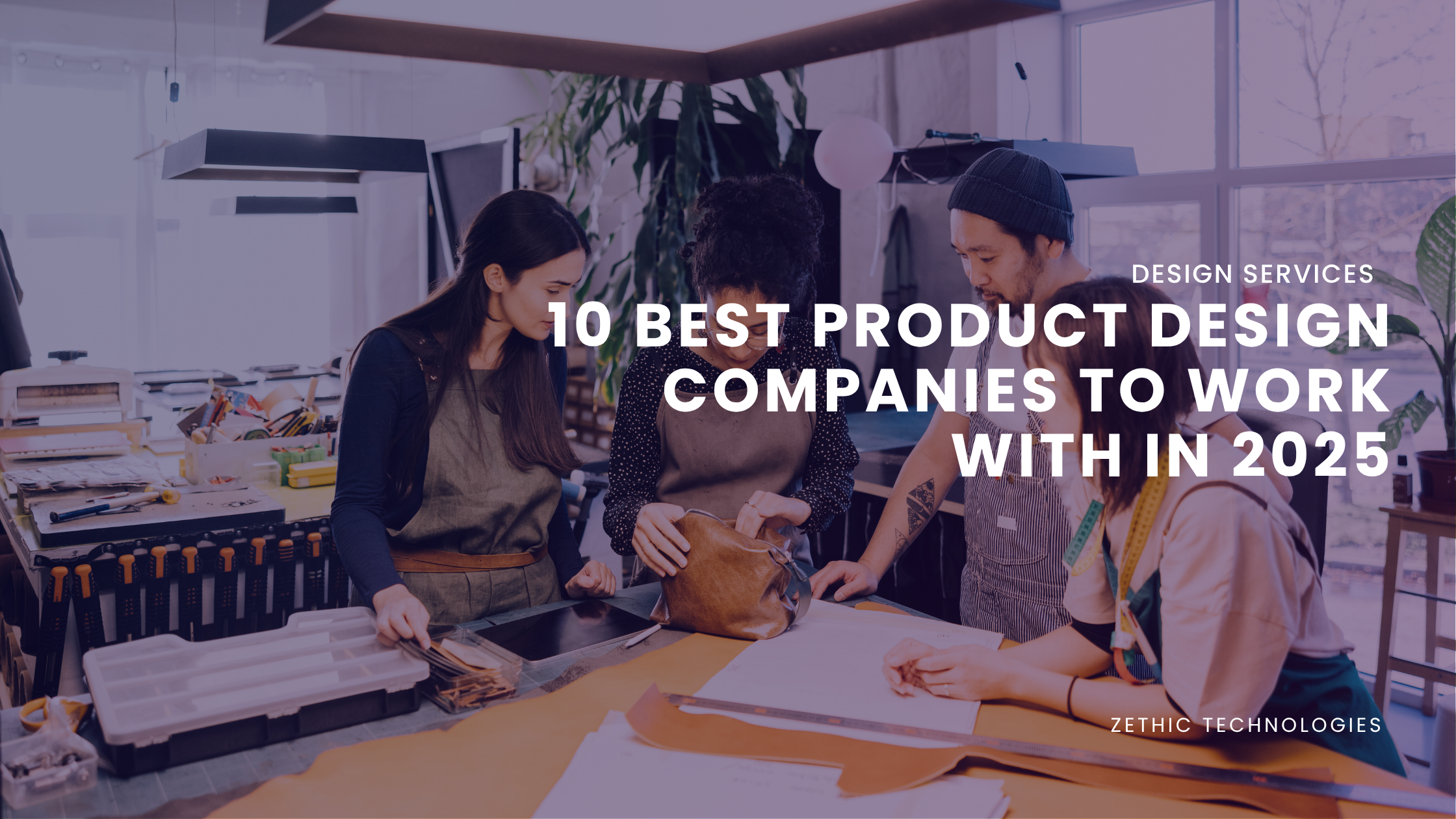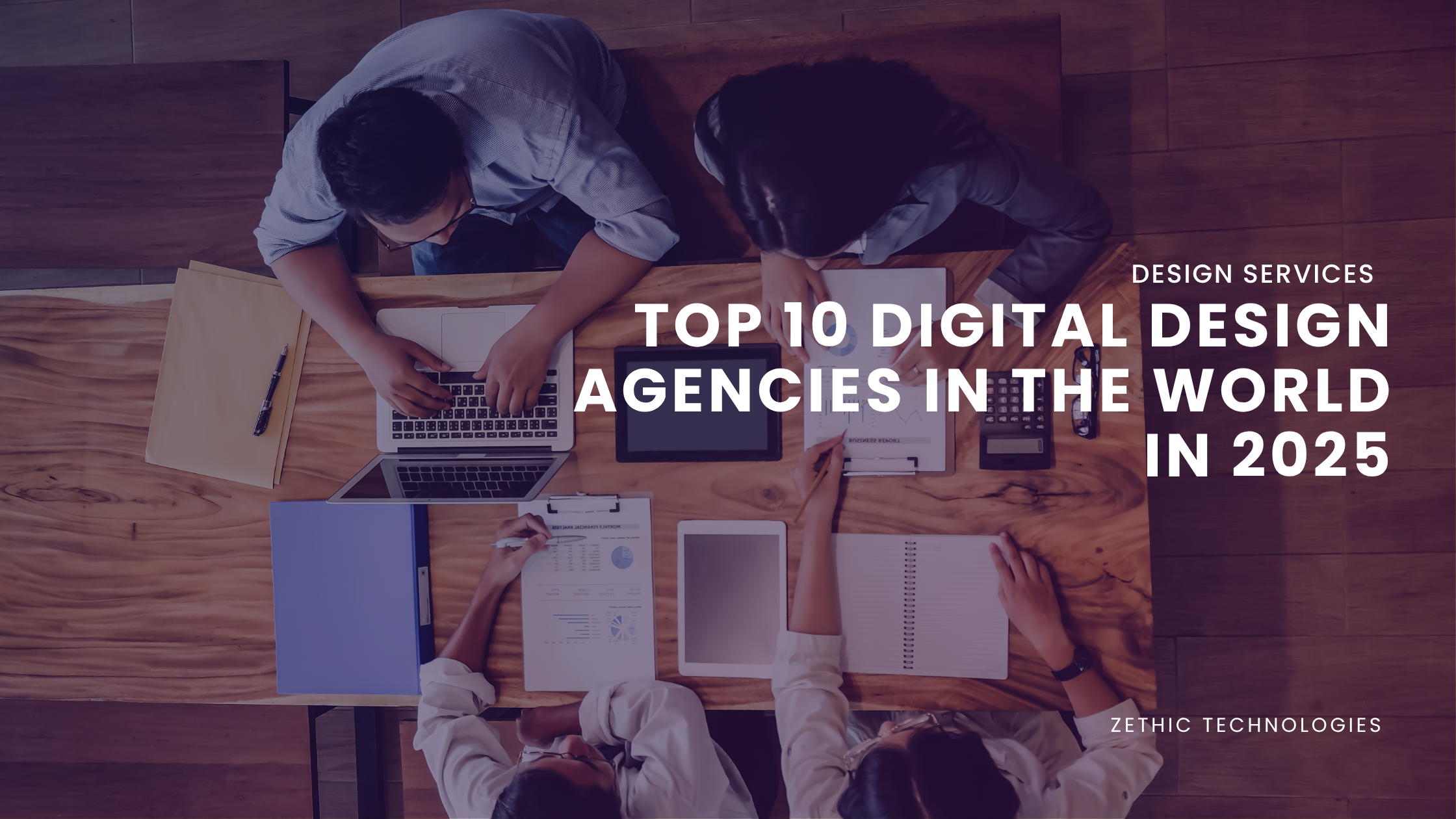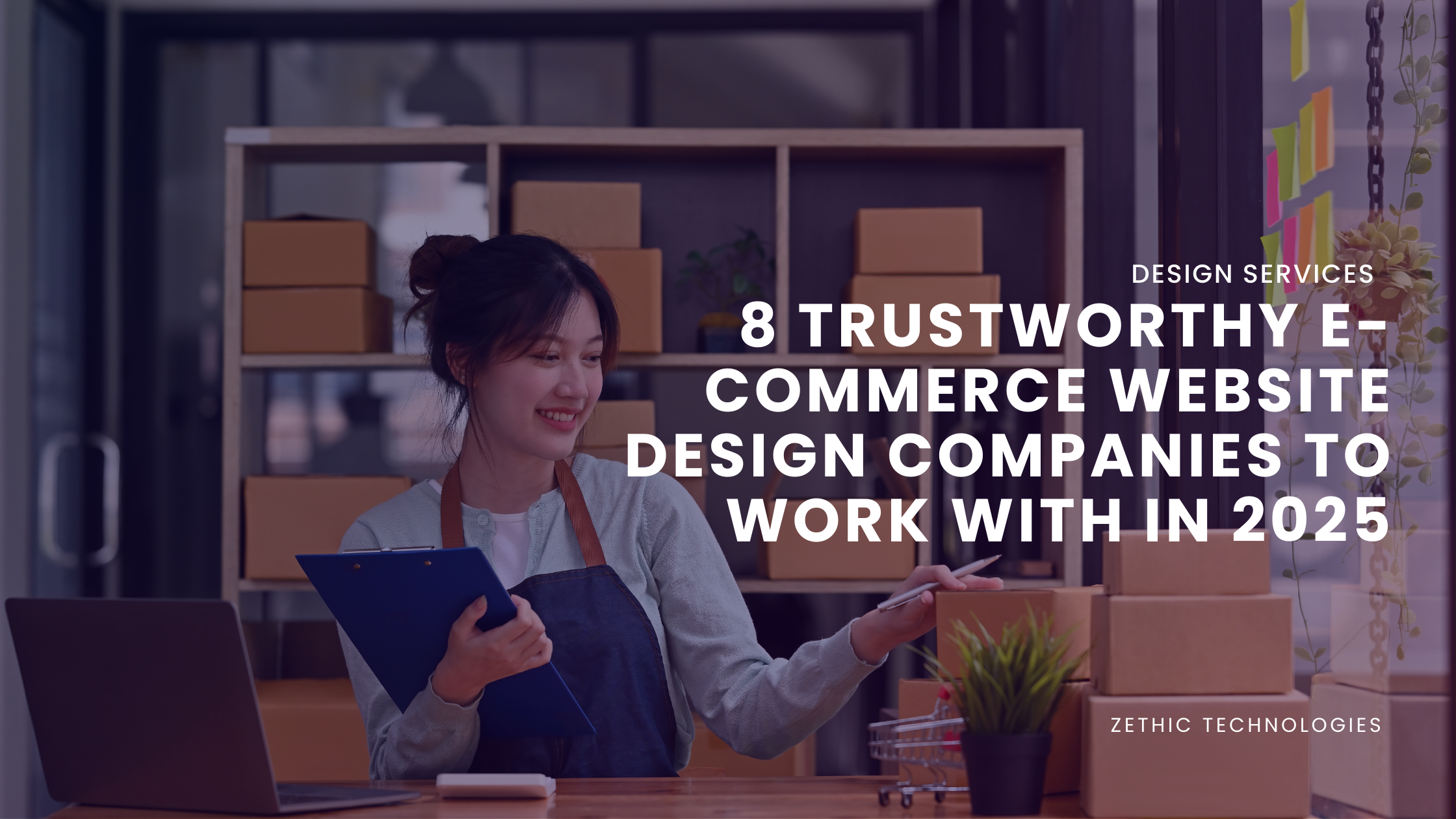Key Takeaways
- Web Design Companies in 2025 must focus on speed, UX, and conversion—not just visuals.
- Over 53% of users drop slow sites; even 1-second delay can kill 7% conversions.
- Always check if the agency starts with your business strategy, not a pre-set template.
Over 1.13 billion websites exist today, and in my own experience, most look like they were designed by someone’s bored nephew during summer break. That’s the brutal truth. Businesses bleed trust, leads, and money just because they picked the wrong “best looking” web design company off a Google search.
The reality? A great design isn’t just about looking pretty—it’s about performance, experience, and conversion. That’s why in 2025, picking a top-rated web design company isn’t a luxury. It has become a survival. So here’s a handpicked list of top web design firms worldwide that actually deliver what you are looking for.
10 Top-Rated Web Design Companies In 2025
Over 53% of mobile users leave a site if it takes more than 3 seconds to load.
Google officially uses Core Web Vitals—like LCP (under 2.5s), FID (under 100ms), and CLS (under 0.1)—as ranking signals.
60%+ of global website traffic now comes from mobile, yet 1 in 3 websites still aren’t optimized for mobile screens. Sites with poor UX see up to 89% bounce rates, and even a 1-second delay in load time can reduce conversions by 7%.

So yeah, flashy design without speed, structure, and strategy will not generate the ROI you thought. And I do not want that, so I will just tell you where you should go:
1. Zethic
Founded in 2017, Zethic is a Bengaluru-based web design company known for building clean, fast, and functional websites. Their work is focused on real outcomes—better speed, better flow, better engagement. No extra layers, no noise. Just design that works.
Their team blends product thinking with strong tech skills, making sure every website looks sharp and performs well across devices. From simple business sites to complex platforms, they handle it all with clarity and structure.
They’ve delivered for brands like Godrej, Decathlon, Tata Power, and many others across industries. What sets them apart is consistency—every website is built with long-term use, scale, and user experience in mind.
Ideal for:
Startups and enterprises looking for modern, high-performing websites.
What they bring
- Fast load times
- Responsive, mobile-ready design
- Custom user experience
- SEO-structured pages
- Modern design systems
- Scalable web architecture
- End-to-end project delivery
2. Clay
Clay is a San Francisco-based design agency that’s been around for over a decade. They focus heavily on UX and digital product design, often working on large-scale interfaces and systems. Their style is refined and consistent, with an emphasis on usability and interaction.
What sets Clay apart is their ability to translate complex product ideas into simple, intuitive designs. They don’t just create visuals—they build systems that feel natural to use. With a team that understands the full digital stack, they’re known for delivering polished, enterprise-grade experiences.
3. Ramotion
Ramotion, based in California, is a design agency with a sharp focus on branding and web design. With over 10 years of experience, they work across different industries but keep the same disciplined approach—design systems, visual clarity, and pixel-level precision.
Their work stands out for being consistent and lightweight. They care about how things move, load, and scale. It’s less about showing off and more about crafting digital presence that holds together under real-world use.
4. Top Notch Dezigns
Operating for over a decade, Top Notch Dezigns is a full-service digital agency with a focus on web design and digital strategy. They build websites with user flow and performance in mind, offering both design and development under one roof.
Their work is centered around conversion—clean navigation, mobile responsiveness, and structured content. It’s not loud or overdone. Just websites that hold up over time and support real goals.
5. Studio Linear
Founded in 2015, Studio Linear marries branding and web design into a single, seamless experience. Their process begins with understanding your brand’s voice and values, which they then infuse into every design decision. What sets them apart is their content-first approach: they craft layouts and navigation around actual messaging before layering in aesthetics.
Their style is minimalist, with a clear focus on performance and readability. Whether viewed on mobile or a 27-inch display, their websites load swiftly and maintain visual clarity. They steer clear of overused stock imagery, instead opting for thoughtful storytelling and bespoke visuals. Light on fluff, heavy on meaning.
6. Huemor
Huemor has been crafting digital experiences since 2012, building a reputation for clean, purpose-driven design. They kick off each project with strategy workshops, diving deep into user personas and brand differentiators. This upfront clarity leads to design systems that are both functional and aligned with business goals.
Their aesthetic avoids clutter and complexity. Pages are intuitive, messages are clear, and layouts are thoughtfully structured to guide visitors without distraction. Working with startups or established brands, Huemor tailors each build for long-term flexibility and growth.
7. Solid Digital
Operating since 2001, now for more than 2 decades. Solid Digital combines nearly a quarter-century of experience with forward-thinking design. They treat websites as long-term growth platforms, embedding strategy into everything from information architecture to button placement. Collaboration is core to their method—regular check-ins, shared KPI dashboards, and iterative testing ensure transparency at every stage.
Their design is clean and user-focused, prioritizing strong UX foundations and modular systems that scale as the business evolves. With offices in Portland and Chicago, they’re well-versed in managing multi-stakeholder projects and delivering measurable results without gloss
8. The Charles
Since launching in 2008, The Charles has earned a reputation for elegant, custom web design that balances sophistication with usability. Their process starts with creative strategy sessions, where they explore brand aspirations and tone. From there, they architect websites that feel handcrafted yet practical.
Their style is reserved but expressive—no templated layouts here. They use refined typography, bespoke imagery, and subtle animations to add personality without distraction. The result is a site that feels tailored, intentionally designed to reflect a brand’s unique voice and vision.
9. Embacy
Embacy began in 2014 as a remote-first agency focused on serving tech-forward clients and startups worldwide. Their signature method revolves around design systems: building reusable components supported by thorough documentation so teams can replicate and scale designs independently.
Their websites are modern, responsive, and lightning-fast. They excel in creating visual consistency across pages, ensuring every element (from buttons to headers) aligns with your brand’s visual grammar. Ideal for product-driven businesses, Embacy gives you control—a site you can grow with, long after initial launch.
10. ToyFight
Founded in 2016 and based in Manchester, ToyFight is a small but highly awarded studio known for pushing creative boundaries. They combine playful visual design with strong UX principles, often crafting digital experiences that feel more like interactive stories than traditional websites. Each project is approached like a collaboration between artists and problem-solvers—not just designers and developers.
Their style is bold, energetic, and unmistakably custom. Think vibrant color palettes, unconventional layouts, and microinteractions that add personality without sacrificing usability. While their aesthetic leans creative, their execution is precise—ToyFight’s work is equally about function, speed, and storytelling that sticks.
6 Things To Check Before You Hire Any Agency
You know what agencies are out there.
Slick websites. Fancy case studies. Mockups of Nike, Apple, and some Berlin-based startup you’ve never heard of. Everyone “builds brands,” “crafts experiences,” and “cares about your growth.” But here’s the plot twist—they’re all saying the same thing, and most of them are just really good at talking. Not necessarily doing.
Before you hand over your money and your website dreams to an agency that throws around the word “storytelling” like it’s confetti, read this. These are the things that won’t be in their pitch deck, but will absolutely show up in the final outcome.
1. Do They Reuse Design Frameworks or Start From Strategy?
Most agencies won’t admit this, but many projects are just iterations of past work. If their design “process” starts with a template or a lookbook and not a strategy session that involves your business goals, audience pain points, and conversion paths—you’re paying for recycled pixels. Ask them how they tailor structure, not just visuals.
2. What’s Their Content Philosophy? (If They Even Have One)
Design without content is just decoration. A good agency will push back on your lorem ipsum. They’ll ask: What’s the story here? What’s the hierarchy? Who’s writing this? If they’re just waiting on you to “send copy” and won’t even wireframe around messaging, they’re not thinking about clarity, they’re just painting walls.
3. Do They Prototype Before Building?
You’d be shocked how many agencies skip prototyping and go straight to development. Which means… you’re testing user experience after the site is live. Real UX thinkers will show you interactive prototypes (not just Figma artboards) that let you test flow, clicks, and logic before code touches the backend.
4. How Do They Measure Success After Launch?
If their job “ends at handoff,” that’s a red flag. You want a partner who sets clear KPIs—bounce rates, time on page, lead quality—and checks in post-launch. Ask what they track, how they optimize, and whether they offer audits after 30/60/90 days. A launch is a checkpoint, not a finish line.
5. Do They Write Developer-Ready Design or Just Pretty Slides?
Pixel-perfect mocks are useless if the dev team can’t implement them. Great agencies speak dev. They name layers properly. They annotate. They think in components and breakpoints. If you’re getting unstructured files with no handoff guidelines, guess what—you just paid for an idea, not a website.
6. How Do They Handle ‘Not in the Scope’?
This is the silent killer. Every project changes. Good agencies plan for it. Great ones build a buffer. The bad ones? They pull out the contract and start billing you hourly for every minor tweak. Ask upfront how they handle scope creep, and whether they’re flexible or just fast to invoice.
Conclusion
Most websites don’t fail because of bad design. They fail because of decisions made before the first pixel was placed—wrong priorities, wrong partners, wrong questions.
If you’re building a website in 2025, don’t just chase beauty. Ask what it will do, how fast it’ll load, and how clearly it’ll speak to your customer. A good web design company won’t just deliver a site. They’ll challenge your assumptions, fix your blind spots, and help you think long-term.
Deadlines slip when design and code do not speak the same language. Zethic hands over files that devs can ship as is. Book a call with the experts and stay on schedule.
FAQs
Why is web design important for my business?
Because it creates the first impression visitors have of your brand, influencing whether they stay or leave your site
Can good web design improve my search engine rankings?
Yes, SEO-friendly design elements and proper content structure help your site rank higher and attract more organic traffic
How does web design influence customer trust?
An attractive, updated website signals professionalism, making visitors more likely to trust and do business with you
Will a good website design increase my sales or conversions?
Yes, effective design guides users toward desired actions, boosting conversions and revenue
Is mobile responsiveness part of good web design?
Yes, responsive design ensures your site works well on all devices, improving accessibility and user satisfaction






